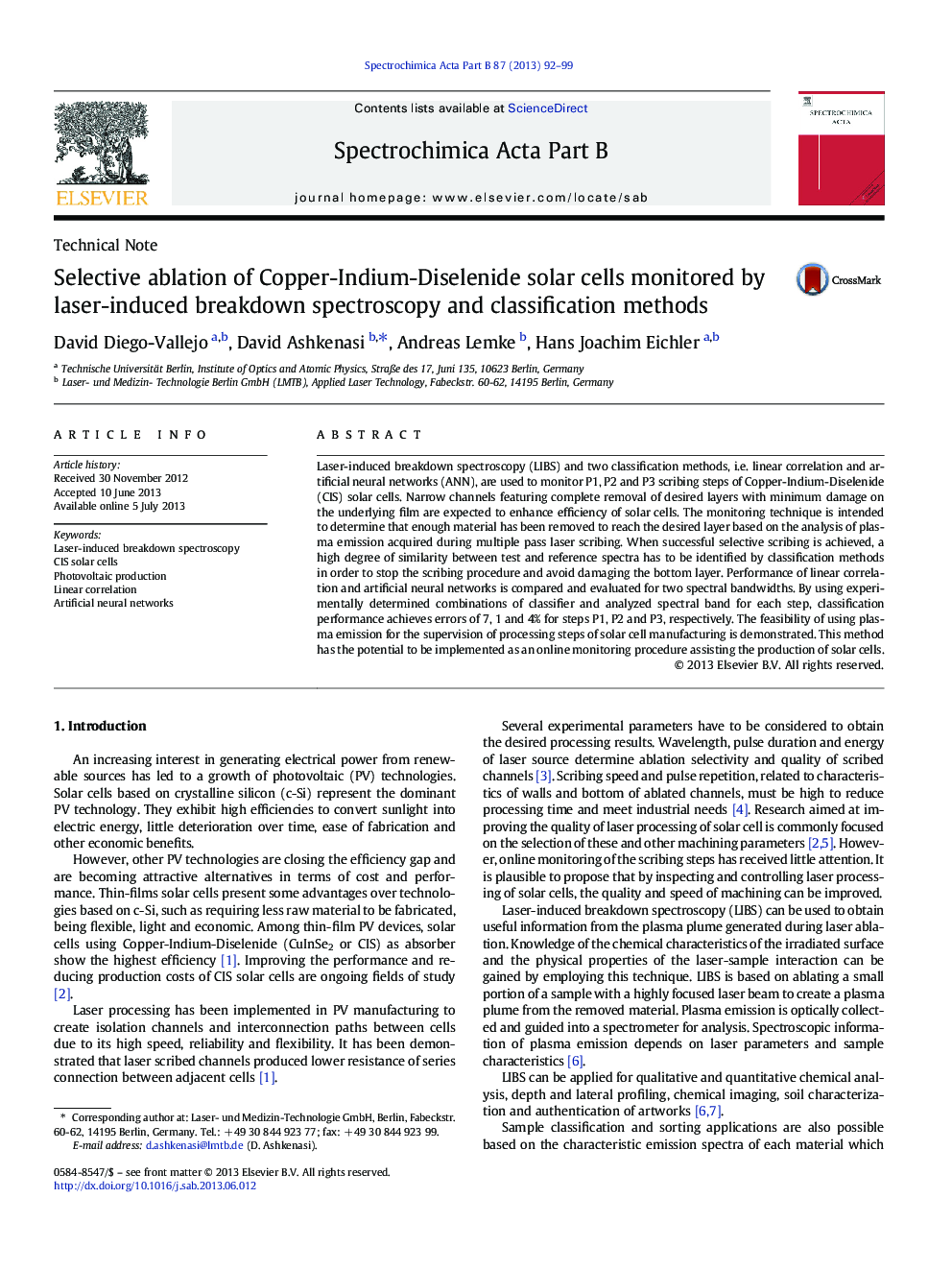| Article ID | Journal | Published Year | Pages | File Type |
|---|---|---|---|---|
| 1239916 | Spectrochimica Acta Part B: Atomic Spectroscopy | 2013 | 8 Pages |
•LIBS and two classification methods were used to monitor CIS solar cells processing.•Selective ablation of thin-film solar cells was improved with inspection system.•Customized classification method and analyzed spectral band enhanced performance.
Laser-induced breakdown spectroscopy (LIBS) and two classification methods, i.e. linear correlation and artificial neural networks (ANN), are used to monitor P1, P2 and P3 scribing steps of Copper-Indium-Diselenide (CIS) solar cells. Narrow channels featuring complete removal of desired layers with minimum damage on the underlying film are expected to enhance efficiency of solar cells. The monitoring technique is intended to determine that enough material has been removed to reach the desired layer based on the analysis of plasma emission acquired during multiple pass laser scribing. When successful selective scribing is achieved, a high degree of similarity between test and reference spectra has to be identified by classification methods in order to stop the scribing procedure and avoid damaging the bottom layer. Performance of linear correlation and artificial neural networks is compared and evaluated for two spectral bandwidths. By using experimentally determined combinations of classifier and analyzed spectral band for each step, classification performance achieves errors of 7, 1 and 4% for steps P1, P2 and P3, respectively. The feasibility of using plasma emission for the supervision of processing steps of solar cell manufacturing is demonstrated. This method has the potential to be implemented as an online monitoring procedure assisting the production of solar cells.
